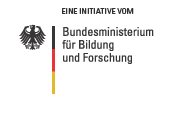Matthias Rögner: Sustainable energy from cyanobacteria
-
 <ic:message key='Bild vergrößern' />
<ic:message key='Bild vergrößern' />
- Matthias Rögner is Professor of Plant Biochemistry at the Ruhr University in Bochum. Quelle: Rögner
15.11.2010 -
How can the energy supply be secured when natural resources such as oil and natural gas are eventually exhausted?Biochemist Matthias Rögner thinks that hydrogen could be an answer.He is taking inspiration from nature in order to produce this energy carrier:“We first of all need to understand the process of photosynthesis to the last detail,” explains the Professor of Plant Biochemistry at Ruhr University in Bochum.“Then it will be a question of developing a genetically modified cell that can produce the hydrogen in large quantities.” Cyanobacteria – also known as blue-green algae – are set to serve as a basis for this process. If he’s not occupied with photosynthesis or renewable energy, then the biologist is most likely to be found in Japan, with which he has a close personal and professional relationship.
About 3.5 billion years ago, aided by sunlight, primitive protozoa began to convert carbon dioxide and water into energy-rich glucose: photosynthesis was born. Oxygen was formed through this process of water splitting – a ‘waste product’ that accumulated in the atmosphere, thereby laying the foundations for more complex forms of life. The biochemical processes of photosynthesis are very complicated, and are to this day not fully understood at the molecular level, although armies of researchers are dedicated to the topic.
The enigma of photosynthesis
A stumbling block in the understanding of the most significant biological process is the so-called Photosystem II “We do not yet know how the splitting of water into oxygen and hydrogen ions actually takes place in detail,” says the researcher, who grew up in Karlsruhe. These are the details that Rögner and his team hope to clarify – a basic research project involving a range of possible interesting applications. The decision makers at the Federal Ministry of Education and Research seem to agree. Rögner is the coordinator of a Germany-wide BMBF joint project called H2 Design Cell: Designing natural and biomimetic systems for light-driven hydrogen production. Eight research groups from a range of backgrounds, taking in biologists and chemists, as well as process engineers and others, are working on the interdisciplinary project (more...).
| Biochemistry in Bochum |
Matthias Rögner heads the Department of Plant Biochemistry at the Ruhr University in Bochum. |
On the path to a perfect renewable energy generator
The ultimate objective is to genetically modify cyanobacteria, and thereby convert them into tiny hydrogen factories. One day it is hoped that the resulting protozoa will perform just a single continual task: Converting solar energy into hydrogen via photosynthesis. The team of scientists headed by Rögner have already identified a number of appropriate genetic building blocks that they plan to integrate into their future energy supplier: A copy of a sun protection factor is an important aspect of the project, so that the cells do not die whilst being bred at high temperatures in reactors. One year ago, researchers in Munster working alongside with colleagues in the US found exactly this kind of natural sunscreen protein (more...).
Furthermore, the hydrogenase enzyme, which produces hydrogen from hydrogen ions and photosynthetic electrons, will be taken from another organism and implanted in the cyanobacteria, as its own enzyme is ineffective.
The first prototype of a reactor that has been newly developed especially for the tiny hydrogen producers – a wellness oasis for cyanobacteria – is already waiting in the laboratory in Bochum. At this time, the new plant comprises just five litres of the precious fluid. “We have already got the engineering and biological issues under control, and are now starting the second phase with a 100-litre reactor,” says the 58-year-old Rögner. If all goes well, in a few years photobioreactors could be producing genetically enhanced cyanobacteria hydrogen, and all the energy that comes with it. The major power companies are taking a close interest in the project. “No large enterprise is willing to participate financially in this project phase, however,” says Rögner.
| More on this subject on biotechnologie.de |
Funding example: Algae as tiny hydrogen factories Funding example:: Cyanobacteria as fuel factories |
A new life in Japan
After studying biology and Japanese Studies in Tübingen, the then 26-year-old scientist moved to Berlin to conduct his thesis at the Max Volmer Institute for Biophysical and Physical Chemistry. “I was the first biologist there among the physicists and chemists, and got a whole new way of thinking about photosynthesis. This has proven to be a real advantage in my life,” recalls Rögner.
He met his wife-to-be during a six-month research stay in Japan at the Jichi Medical School in Minamikawachi-Machi, where he was introduced to Japanese culture. Rögner’s expertise in matters Japanese has resulted in a lively exchange scene at his workplace: Japanese exchange students and researchers regularly travel to Bochum, and Rögner’s students can gain experience in Japanese working groups. Young scientists travelling abroad are helped to prepare by the Rögner family. “My wife gives my staff lessons in Japanese language and culture, and I teach them the science,” says Rögner. “Conversely, we help our Japanese guests with many of the small problems of daily life in Germany – starting with the food,” says the biologist. With such a complete service, and with continuous exchanges taking place, it is no surprise that Rögner’s working group has become one of the most international at the University.
Author: Andrea van Bergen




